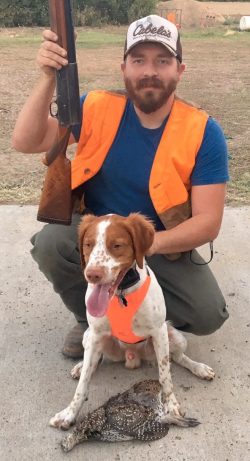 Many hunters hunt Ring-necked Pheasants, but few bring any home. Most of my observations of other hunter’s results inn multiple shots and misses. Here are some thoughts on how to bring home more Cockbirds.
Many hunters hunt Ring-necked Pheasants, but few bring any home. Most of my observations of other hunter’s results inn multiple shots and misses. Here are some thoughts on how to bring home more Cockbirds.
Hunt slow Expect a flush at any time. If your hands are in your pocket and the gun is tucked under your arm, good luck. Through experience you will learn that ends of drives are good spots to pay attention but… The great thing about cockbirds is that they are unpredictable.
Yell “COCK”, “HEN”, or “NO” for every flush. Communication is key when hunting. Safety is critical as is identification of the target. Hens can not be shot. Roosters are legal targets. Sometimes they cackle and identify their gender but most of the time they don’t. Light will make identification hard, but another angle has a different view. Call out the targets and your partner may have a shot.
“NO” means NO! Do Not Shoot!!!!! If the shot is unsafe for any reason yell NO!
Swing the gun through the target Most hunters miss because they stop their gun. Aim at the bird and swing through it as you shoot. Your pattern will be larger and more likely to connect.
Use different ammunition Stack you shells for success. You know that your first shot will likely be close, so use #7 1/2 shot for your first shot, #6 for the second and #4 for your hail Mary. I prefer 1 ½ oz. of shot in when I reload.
Zig Zag Don’t walk in a straight line. Flank the dog and walk in an irregular pattern. Stop occasionally and anticipate a flush.
Wear Florescent orange You, the dogs and buddies all need to wear safety orange. Things happen quick when a rooster takes flight. You have just moments to raise the gun, identify and call out the target, know the position of the dog, hunters, and anything that may make the shot unsafe. All this and you are excited too. Orange helps know where not to shoot.
The best shot is the shot not taken. If you are not sure or comfortable, don’t shoot. It is hard to identify an immature rooster, hen, or low light target.
Mark your target Once the bird is down, go directly to it. Shooting multiple birds is fine in an open field but in thick cover, recovery is almost impossible, even with a good dog. One in the hand is better than 2 lost and wasted birds.
Pheasant hunting is exciting and fun but also the most dangerous bird hunting I have witnessed. Too many accidents happen because of poor choices. Know this and always be safe.
No rooster is worth an injury to hunters or dogs.
Montana Grant
For more Montana Grant, cackle with him at www.montanagrantfishing.com.